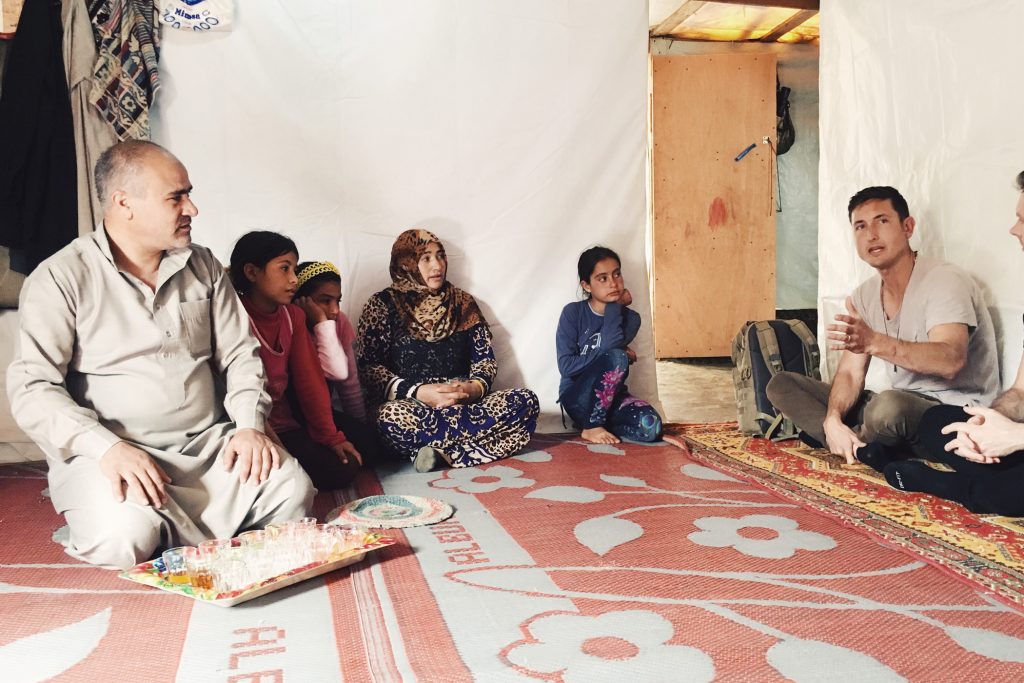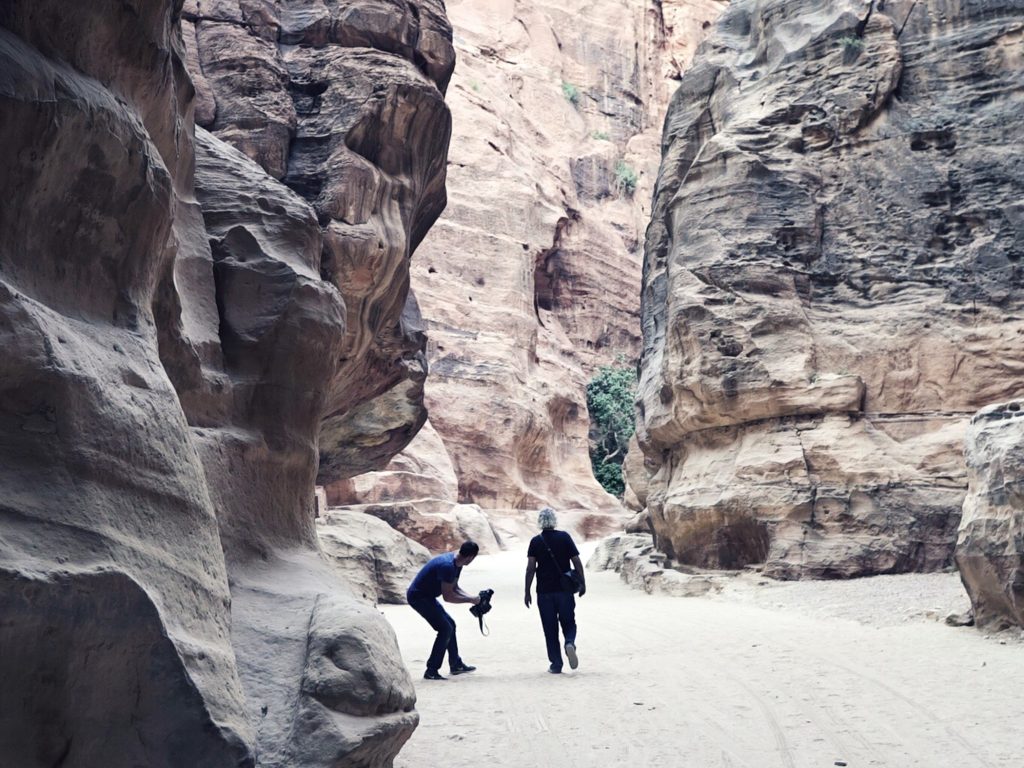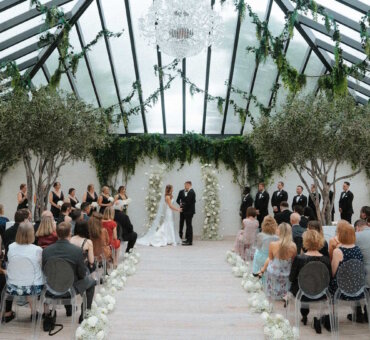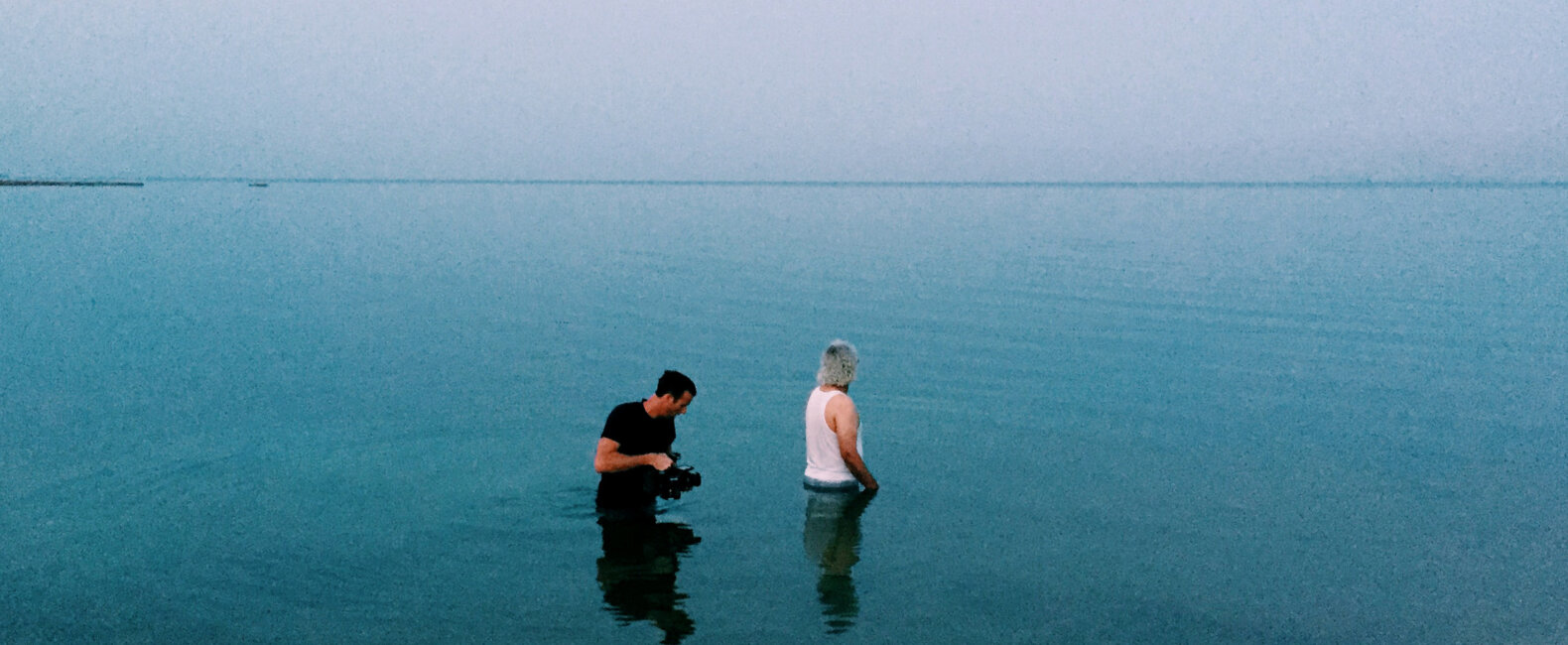A sculptor doesn’t see the rock. A sculptor sees what’s inside the rock (i.e. The Sculpture). It takes a different kind of eyes — ones that look past the surface and see the shape underneath. In many ways, it’s the same kind of eyes that a documentary filmmaker needs: x-ray eyes. “You have to chisel away at big chunks of rock,” filmmaker Jake Viramontez told us. “But what it ultimately reveals is something beautiful underneath.” Jake’s latest film, Killing the Rock, is both about a sculptor and is a sculpture in itself: a piece of art carved from the Syrian refugee crisis, and one man’s attempt to make sense of the senseless. Watch the film below, then read more about Jake’s experience making it.
LICENSE THE SCORE FROM THE FILM
Did you always see yourself as a filmmaker?
I took my first film class in high school because I thought it would be an easy A. Our first assignment was a documentary. So I did one about my dad who was a firefighter at the time. It was called Behind the Flames. I hung out at the firehouse and filmed for three days, then I cut together this little doc and showed it to my teacher. He thought there was something to it. So he worked on the story with me and helped on the edit. Then he asked if he could enter it into a local film festival. It won two awards. That’s when I realized, “Wait a minute — this is a real profession. People do this for a career.”
That pretty much set the trajectory for the rest of my life. I got accepted into the ArtCenter College of Design in Pasadena, California, just based on my reel; and I earned a BFA in Film Production.
Are you glad you went to school?
You mean, was it worth the investment? I always tell people that it taught me who I wasn’t as a filmmaker because I got to try out all these different styles. I was never going to replicate someone else’s work, but I got to experiment. The other thing film school did was put me under tight deadlines. It taught me what it’s like to be given a project and have to have a film completed within a week’s time. It taught me how to crank out work on a consistent basis.
You learned how to be stressed out.
Yeah. And how to break up with my girlfriend.

How did you find the subject for Killing the Rock?
I went to Lebanon in May of 2016. World Vision had invited me to do a short film piece — a firsthand account of the refugee crisis in Beqaa Valley. It opened my eyes to what was going on. I saw the kids, and I had tea with the families, and my whole world was rocked. It was like my heart had been ripped open to this refugee crisis, and I felt like I had to be a part of it. I turned to a friend who used to work at the United Nations, and she introduced me to a woman who works for the Human Rights Campaign. They helped get me access to the Zaatari refugee camp in Jordan for a couple of days.
I then reached out to Zach Ingrasci and Chris Temple, the directors of a documentary that was filmed in the camp, called Salam Neighbor. I was looking for tips before I went out there. They hooked me up with their story producer, who offered to sniff out stories for me. And because my allotted time in the camp was going to be prohibitively limited, he pointed me to Abu Raja, a friend of his father, who was a sculptor living in a nearby town. His art is beautiful. Just breathtaking.
So I sent over some questions and had Abu Raja’s answers shot on a camera phone. He explains all the pain and suffering he’s gone through: losing his son; losing his brother; having his artwork destroyed by the regime; having his entire studio broken down for no other reason than the fact that he wasn’t pro-Assad; and, finally, being forced from his country and fleeing to Jordan. A couple days later, I bought a plane ticket for my DP and me, and two weeks after that we were on a plane to Jordan to film his story.

What was your process like once you were there?
Because I had so much knowledge going in, I more or less had the story structure figured out. We did the entire interview in one sitting, but with the mind-set that we wanted to capture the emotions of what he went through. Whereas most documentaries tend to follow the subject and organically capture whatever they do, we wanted to be more strategic, especially with regard to Abu Raja’s emotions. Which meant we had him re-create certain moments for us. For instance, after seeing him pray, we asked if he’d be comfortable praying for us in a location we’d found, where the wind was blowing through the blinds. It was still his reality; we were just curating it to fit the aesthetic universe we wanted to create.
It seems like a sculptor, of all people, would understand what you were going for. You’re creating something honest; but to do it, you have to get your hands all over it.
Exactly! You have to chisel away at big chunks of rock. But what it ultimately reveals is something beautiful underneath. We wanted to unveil the pieces of his life that were going to resonate most deeply with the audience. He totally got that, and he was completely on board.
What have you learned about capturing the emotions of a subject like this? What helps to create or communicate those emotions?
It’s such a complex question because at a certain point, language breaks down when it comes to emotion. It’s just one of those things that grips you. You’re not really sure how or why. It could be a piece of music or an image or some nuance of the story that goes straight to your heart. Or straight to your gut. It bypasses your psychological faculties.
Abu Raja’s life and his experiences are all so emotional — our job was to put perimeters on that journey. And we had to leave out a lot. Like the fact that after we finished filming, he walked back to Syria to be reunited with his family — that he was willing to step back into the midst of adversity and death in order to return to his country. Or the fact that his wife was diagnosed with breast cancer. Each of those pieces opened up more questions than we felt we could tackle in the film. I couldn’t cross all of those emotional bridges in a five-minute short film. So I hoped we could at least move people enough so they’d sit down and commit to spending a few minutes on the Internet to get the rest of the story.

What I’m emotionally drawn to is probably different than what you’re emotionally drawn to, or what my wife is emotionally drawn to, or, especially, what my dad is emotionally drawn to. But if you can tell a story that communicates hope in the middle of despair, you’ll find something powerful in that story. The resiliency of the human spirit, the story of perseverance, the story of sacrificing some part of yourself to make something bigger than yourself… those are things most people can connect with. Like Abu Raja’s sculptures.
He said to me, “I make these sculptures so they can be a message to future generations that we’re not destructive. Although the media is trying to portray us as destructive and harmful, we’re builders. We’re crafting something beautiful and placing it in the world. That’s the future I’m investing in.” For me, that’s as emotional as it gets.
Maybe this is a good time to ask what you think makes a good story?
For me, a powerful story tries to make sense of the chaos of life. It tries to help us navigate the human experience. If we’re able to watch a film or read a novel or see a play or hear a piece of music and have some sort of clarity about how to navigate our own life, then that story has done its job. Every good story will, in some small way, move the needle of humanity forward. If it helps peel back the layers of what love looks like, that’s going to help us navigate what it means to be a loving individual in the world around us.
How about character? What makes for a good character?
Personally, I’m drawn to a character who has a goal. It’s one of the basics that sometimes gets overlooked. I want to root for a character, which means that goal is also indicative of the character’s need to overcome something inside of themself. So the external and the internal come into conflict with each other. That way, the closer the character gets to their destination, the deeper into their inner world they have to go, and the more they have to fight their demons to uncover the truth of who they are.
I’m pretty influenced by Joseph Campbell and his study of mythology. He says all heroes — whether they be male or female, regardless of culture, regardless of language, regardless of the era they lived in — go out into the unknown and have to overcome the obstacles that keep them from bringing back what he calls “the elixir of life,” which is intended for their people. The hero journeys out into the world and then back home, and that’s a very external process. But the journey is actually about the internal transformation the hero undergoes along the way. And the person they become.

















































































